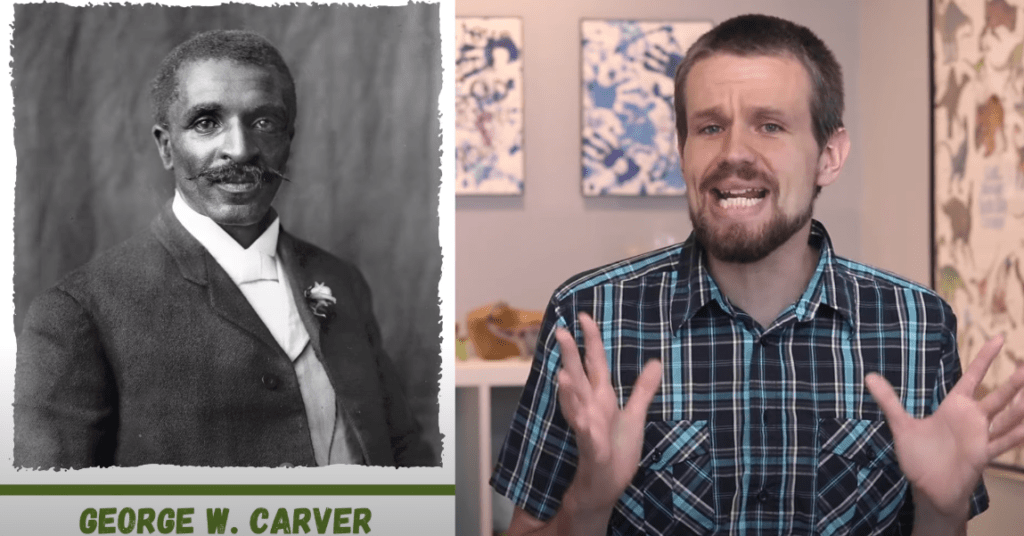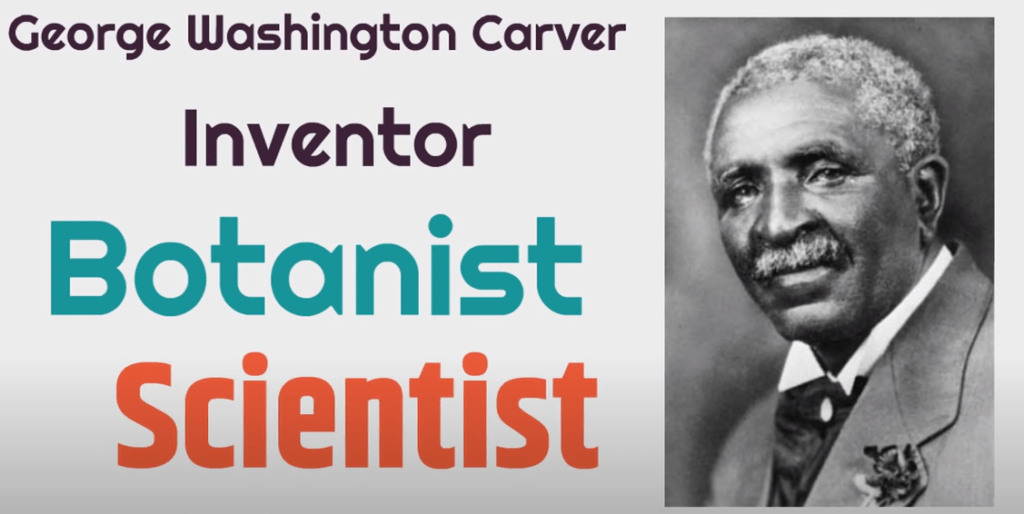Facts About George Washington Carver: The first African American to have a national park named after him was George Washington Carver. In Missouri, there is a park with a monument to him. Carver was not only a brilliant scientist and inventor, but he was also a gifted musician and painter as well. In 1893, his work was shown at the World’s Fair.

Carver was the son of Moses Carver’s slave, Mary, and was born into slavery. Infant George and his mother were kidnapped and taken to Arkansas to be sold as slaves during the American Civil War. When Moses Carver finally tracked down George, he couldn’t find Mary. The motherless child was brought back to his master’s plantation, where he was cared for until he recovered. George was no longer an enslaved child when slavery was abolished in the United States in 1865. At the age of 10 or 12, he left the Carver plantation to pursue higher education. Wandering around and working with his hands helped him develop an interest in the natural world. Drawing and painting became one of his favorite pastimes as an adult.
He was an American agricultural chemist, agronomist, and experimenter who helped revolutionize the agricultural economy of the South with the development of new products derived from peanuts (groundnuts), sweet potatoes, and soybeans. George Washington Carver was born in 1861. near Diamond Grove, Missouri, and died on January 5, 1943, in Tuskegee, Alabama. He spent the majority of his career at Tuskegee Normal and Industrial Institute (now Tuskegee University) in Tuskegee, Alabama, where he taught and conducted research.
About Early Life
For the sake of survival, George learned a small amount of knowledge from books and from doing whatever work was available. He was able to make a living by doing a variety of odd jobs around the house, such as cleaning, cooking, doing laundry, and working on farms. As a farmhand in his late 20s, he completed high school education in Minneapolis, Kansas. A Kansas university had rejected Carver’s application for admission because of his race, so the artist and pianist transferred to Iowa State Agricultural College (later known as Iowa State University) and earned his bachelor’s and master’s degrees in agricultural science there.
He moved to Tuskegee, Alabama in the fall of 1896 to take charge of the newly formed agriculture department at Booker T. Washington’s famed Tuskegee Normal and Industrial Institute. To improve the lives of African Americans at Tuskegee, Washington focused on education and useful skills rather than political activism; he advocated conciliation, compromise, and economic development as the means for Black advancement in American society. Carver would remain at Tuskegee for the rest of his life, despite numerous offers from other institutions.
In 1916, Carver was elected to the Society for the Encouragement of Arts, Manufactures, and Commerce (London) and received the Spingarn Medal in 1923. When he was nearing the end of his career, Thomas Edison offered him a job with a salary of more than $100,000 per year. His friends included Henry Ford and Mahatma Gandhi, as well as former US Presidents Calvin Coolidge and Franklin D. Roosevelt. When Joseph Stalin invited him to supervise cotton plantations in southern Russia and make a tour of the Soviet Union in 1931, Carver turned it down because he didn’t think he could handle the responsibility.

About Research Career
In 1896, Carver was named director of agricultural research at the institute, and he spent the rest of his time working on projects that would help farmers in the South. An experimental farm was set up by him to conduct soil management and crop production experiments. Soil depletion and erosion had taken their toll on fields that could no longer support any plant life as a result of the unremitting single-crop cultivation of cotton at this time in the Deep South. Peanuts (Arachis hypogaea) and soybeans (Glycine max) should be grown as a remedy by southern farmers (Glycine max).
Plants in the legume family (Fabaceae) could help replenish the soil’s nitrogen supply while also providing the protein that many Southerners are lacking. After Carver discovered that the soils in Alabama were ideal for growing peanuts and sweet potatoes (Ipomoea batatas) when the state’s farmers began cultivating these crops instead of cotton, they discovered that there was little demand for them. For this problem, Carver set out to expand the commercial potential of the peanut and sweet potato through an ingenious laboratory research program. To his credit, he created 300 products from peanuts—milk and flour among them—along with 118 from sweet potatoes, such as flour, vinegar, and molasses, as well as synthetic rubber, postage stamp glue, and postage stamp ink.
Carver was viewed by many scientists as a concoction rather than a scientific contributor. He was criticized by many of his fellow African-Americans for what they saw as his submission. It was clear to anyone who met this diminutive, soft-spoken man that he was completely uninterested in the conventional pleasures and rewards of this life. Many whites, however, were charmed by Carver’s humble demeanor and quiet work in self-imposed segregation at Tuskegee, which endeared him to many whites. After adapting himself to the social norms of southern whites, he was viewed as a patronizing figure by whites.
Carver’s experiments
Farmers began to turn to peanuts and sweet potatoes for income in the South in 1914 when the boll weevil nearly ruined cotton growers. Carver’s experiments were made public at this time. The South became a major new source of agricultural products after much of the previously exhausted land was replenished. By 1940, peanuts had become one of the top six cash crops in the United States, and in the South, they were second only to cotton as the second most important cash crop (after cotton). Farmers in the United States were given access to 2,023,428 hectares (5,000,000 acres) of federally subsidized peanut land in 1942. Carver’s efforts had finally liberated the South from its excessive dependence on cotton, thanks in large part to his efforts.
Farmers began to turn to peanuts and sweet potatoes for income in the South in 1914 when the boll weevil nearly ruined cotton growers. Carver’s experiments were made public at this time. Agricultural products from the South, which had previously been a major exporter, were now a major new source of supply. By the time Carver arrived at Tuskegee in 1896, the peanut had not even been recognized as a crop, but it would go on to become one of the six most important in the United States and, in the South, the second most valuable cash crop (after cotton) by 1940. There were 5,000,000 acres of peanuts allotted to farmers by the United States government in 1942, a total of 2,023,428 hectares (5,000,000 acres).
Once cotton subsidies were reduced, Carver’s work had finally liberated the South from its overreliance on the commodity. The Carver Research Foundation at Tuskegee was established in 1940 by Carver, who donated his life savings. As a result of his efforts during World War II, he was able to produce more than 500 different shades of textile dyes. In this way, Carver came to be seen by many white Americans as a kind of saintly and comfortable symbol of African American intellectual achievements. Because Carver was clearly uninterested in the racial politics of the time, it appears that he didn’t care about his image. To serve humanity was all that he wanted in later life.
He started out helping the poorest Black sharecroppers, but he ended up improving conditions for people all over the South. It was through his efforts that agricultural training advanced significantly during a time when farming was the most common occupation in the United States, and he spread Tuskegee’s influence throughout the South by promoting better farming methods, crop diversification, and soil conservation techniques.




